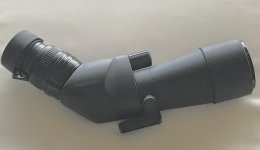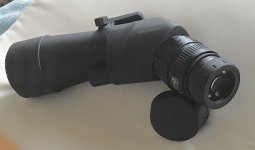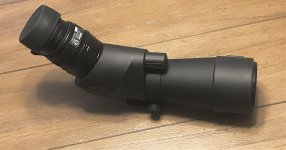Hi,
I'm half-thinking of pulling the trigger on one of these, as I need a smaller, lighter, mid-size scope. I am a bit challenged technically and am confused about stuff like focal lengths etc. Can anyone tell me what mag the XW14 ep gives on the PF 65? I'd be happy with a fixed 27 or 30x, I don't expect a zoom ep to perform miracles on a 65mm scope. (I think the Pentax zoom eps go up to 60x, which is asking too much). Any advice appreciated.
Edit: I've just read with thanks Jmepler's advice on a Pentax thread, saying divide the focal length of the scope (390mm) by the focal length of the ep. I don't even know what focal length means, but the ep I'm looking at is called XW14, so maybe the focal length is....14? That would give a mag of just over 27x. Am I even half right?
I'm half-thinking of pulling the trigger on one of these, as I need a smaller, lighter, mid-size scope. I am a bit challenged technically and am confused about stuff like focal lengths etc. Can anyone tell me what mag the XW14 ep gives on the PF 65? I'd be happy with a fixed 27 or 30x, I don't expect a zoom ep to perform miracles on a 65mm scope. (I think the Pentax zoom eps go up to 60x, which is asking too much). Any advice appreciated.
Edit: I've just read with thanks Jmepler's advice on a Pentax thread, saying divide the focal length of the scope (390mm) by the focal length of the ep. I don't even know what focal length means, but the ep I'm looking at is called XW14, so maybe the focal length is....14? That would give a mag of just over 27x. Am I even half right?
Last edited:








